Affiliate disclosure: This post may contain affiliate links. Please see our Privacy Policy.
Elderberry tincture is a simple way to convert fresh or dried elderberries into a homemade remedy to boost the immune system.
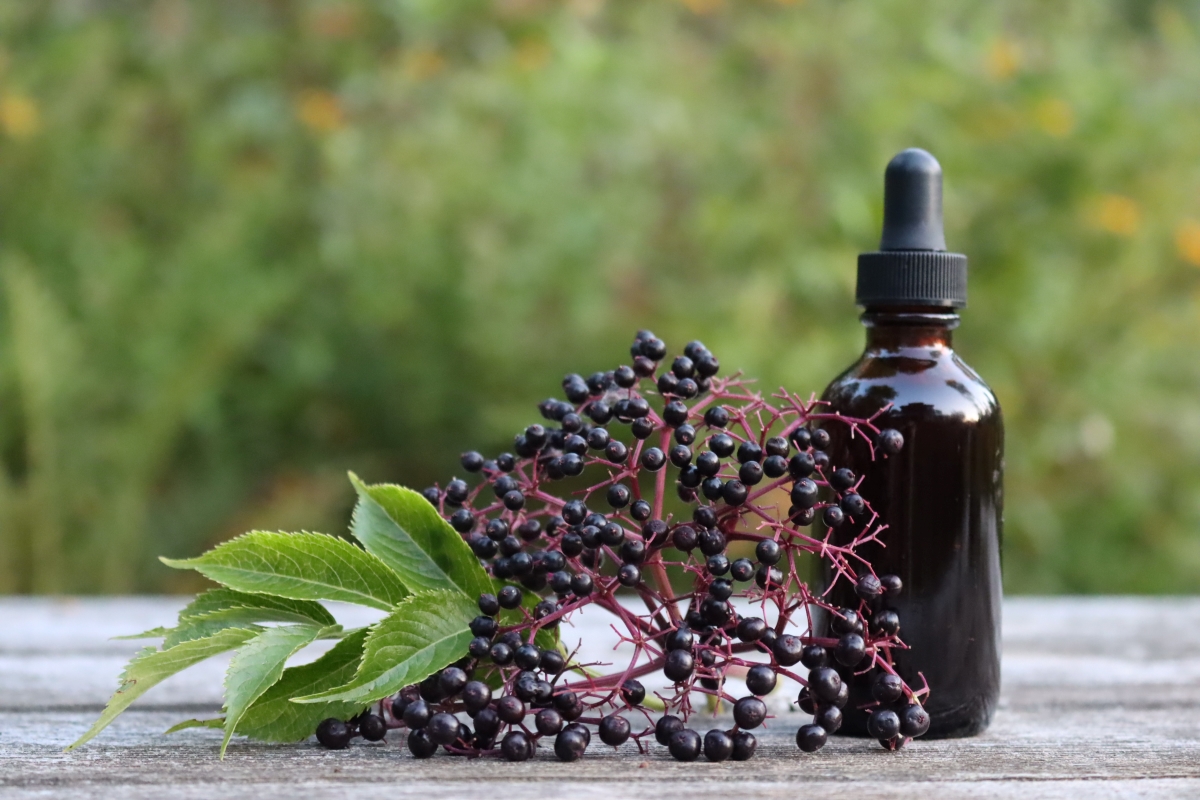
You may have come across elderberry, in either tincture or syrup form, if you’ve ever had a bad cold or flu bug. It’s a powerful form of plant-based medicine when it comes to fighting off the dreary symptoms that so often accompany seasonal bugs, and it can also be taken as a preventative remedy when everyone around you is feeling under the weather.
A tincture, which is a concentrated herbal extract, is an ideal way to glean the medicinal benefits of elderberries, and it can be made at home using only a couple of ingredients and very little in the way of equipment.
The one thing you’ll need, however, is time — about 2 months’ worth, to be precise. Once you discover how simple it is to make your own elderberry tincture at home, you’ll be gifting everyone you know a bottle of this potent flu-fighting elixir.
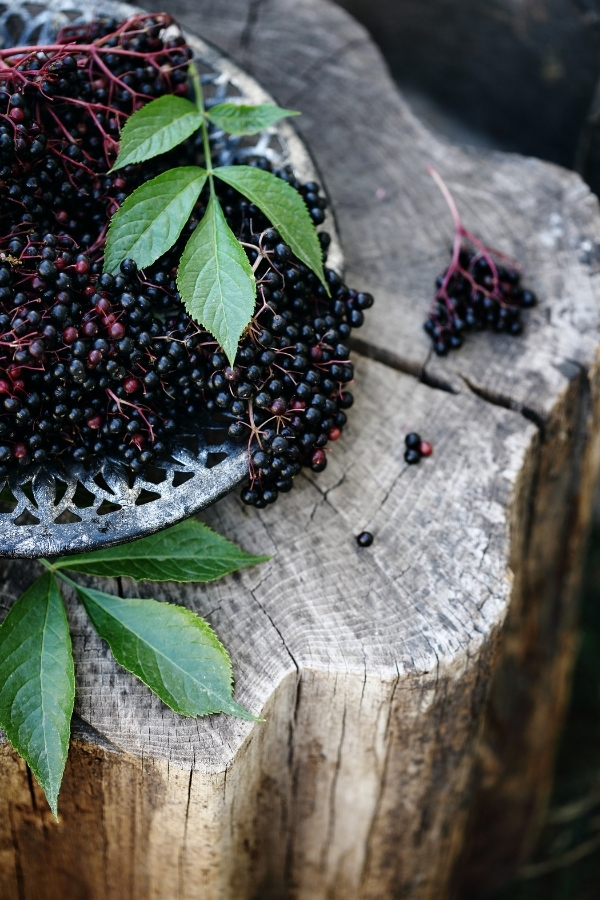
(Always consult your doctor or a clinical herbalist before trying any new herbal remedy, as there’s always the possibility of unintended consequences, allergic reaction, or interactions with other medication. If you’re harvesting wild plant material, make sure you’re 100% confident in your identification and consult multiple sources for your ID. The following is based on my research and experience, but I don’t claim to have any certifications that would qualify me to advise you on your health. Please do your own research and always verify with multiple reputable sources.)
Elderberry Tincture Benefits
The use of elderberry as a medicinal plant can be traced all the way back to the Stone Age, with evidence showing elderberries have long been used for their various therapeutic benefits throughout the world.
To this day, elderberries are well-known for their antiviral and immune-boosting properties, both in the realms of modern science and traditional folk medicine. Elderberry extracts are now being studied for their benefits when it comes to fighting off cold and flu symptoms and the results are encouraging.
One study examined the effects of elderberry extract on a group of 60 people, all of whom were experiencing early symptoms of the flu. The participants were given elderberry tincture or a placebo over the course of their illness, reporting their symptoms regularly.
The results of the experiment? The individuals who were given elderberry extract reported their flu symptoms retreating an average of 4 days earlier than those who were given a placebo.
Another study, which examined the effects of elderberry extract on long-haul air travellers who were experiencing cold symptoms, found that the duration of symptoms was on average 2 days shorter when an elderberry extract was taken versus those who had been given a placebo.
Although elderberry tinctures have traditionally been used to treat cold and flu symptoms, early research is beginning to explore the extract’s anti-inflammatory properties, as well its potential usage as a decongestant, antibacterial agent, and a remedy for upset stomach (among many others).
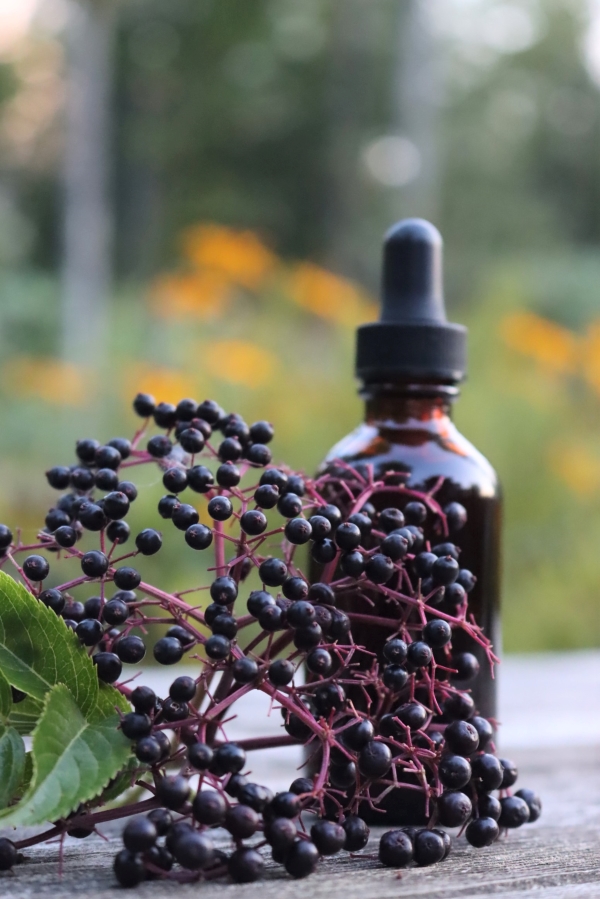
Equipment for Homemade Elderberry Tincture
As with any tincture-making project, the equipment needed to make a potent herbal extract is minimal.
You’ll need a jar with a tight-fitting lid — most tincture recipes call for a mason jar and lid —which is what I also use and recommend when I’m making tinctures.
Regular mason jars work, but they also make amber mason jars which help prevent the tincture from being damaged by light while it’s extracting. If you make elderberry extract in a clear mason jar, be sure to store it in a dark place while you’re waiting for the elderberry tincture to extract.
When it comes time to decant the finished elderberry tincture, I find that a medium-sized funnel lined with a couple of layers of cheesecloth gets the job done without any mess (while doing a good job of filtering out any residual sediment).
Store tinctures in a dark amber glass bottle with a dropper. The dark amber glass helps protect the active medicinal compounds in your tincture from light, which can lead to a decline in quality of the tincture’s therapeutic benefits.
Label tinctures with blank adhesive labels or masking tape.
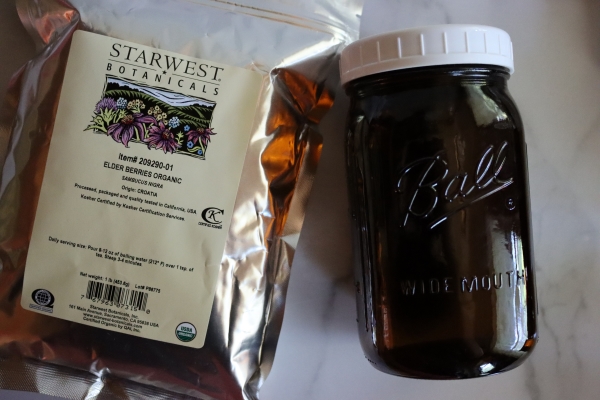
Making Elderberry Tincture
Depending on what you have available, elderberry tincture can be made using fresh or dried elderberries. I’m using organic dried elderberries from starwest botanicals, since I tend to save my fresh elderberries for making elderberry pie and elderberry jelly.
While it’s technically possible to make a successful tincture with intact berries, you’ll get the best results if the berries have been roughly chopped. If the berries are fresh their antioxidant-rich juices will be released during this step and, whether fresh or dried, chopping up the elderberries exposes more surface area — which means that more alcohol-soluble compounds will be extracted.
Fill a clean jar 1/3 to 1/2 of the way with fresh or dried elderberries. Resist the urge to pack fresh elderberries into the jar, allow them to settle naturally.
Next, completely cover the elderberries with alcohol. I like to use Smirnoff vodka because it’s inexpensive yet palatable (because remember, you’ll be dropping the tincture into your mouth). You can use almost any kind of ethyl alcohol, as long as it’s at least 80-proof (or 40 percent) alcohol — anything lower than this and you begin to lose some of the alcohol’s important antibacterial properties (and the tincture may spoil).
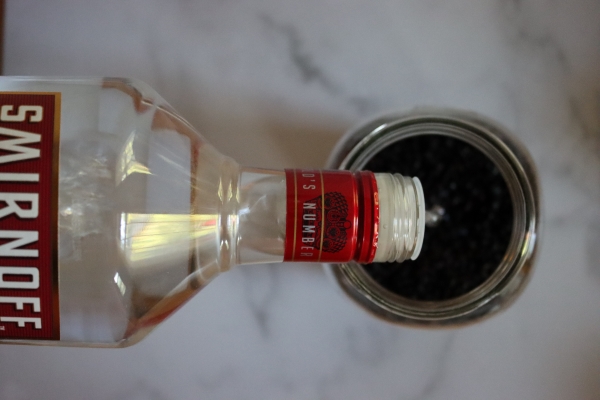
Never use isopropyl alcohol (rubbing alcohol) for making tinctures; it’s poisonous to ingest and can potentially make you very sick. Rubbing alcohol isn’t suitable for tinctures, but it can be used to make herbal liniments for external use (but be sure to label them carefully). Elderberry tincture is only used internally, so always use an edible spirit like vodka or brandy (and never rubbing alcohol).
Give the jar and its contents a gentle shake before storing it in a cool, dry place away from any sources of light (like a kitchen cupboard or pantry shelf).
Repeat the gentle agitation every couple of days and keep an eye out for low alcohol levels. Dried plant matter, in particular, will sometimes absorb alcohol. If this happens, simply remove the lid and top off the elderberries with more alcohol.
After a period of 6 to 8 weeks, the tincture is ready to be decanted into dark amber glass bottles. Elderberry tincture, if stored properly, can be used for up to 5 years after the initial extraction.
Line a medium-sized funnel with a folded piece of cheesecloth, placing the tip of the funnel into the neck of a dark amber glass bottle. Carefully pour the tincture into the bottle, squeezing the remaining elderberries into the cheesecloth to get every last drop. Discard the alcohol-saturated remains of the elderberries.
Label the tincture-filled bottle with its contents, the date it was bottled, the recommended dosage, and (optional but helpful if you’re new to the world of herbal medicine) common usages.
Alcohol-Free Elderberry Glycerite
If you’d prefer to avoid using alcohol in this tincture, or any tincture, you can make what is known as a glycerite tincture.
A glycerite tincture is make using a combination of food-grade vegetable glycerin and water; usually a ratio of 3 parts to vegetable glycerine to 1 part water. Aside from the solvent being used, the method for making elderberry is the same as with alcohol.
Glycerites don’t have the same super-long shelf life as alcohol-based tinctures, but they will keep for 14 to 24 months (which is still plenty long).
Elderberry Tincture Dosage
I am not a clinical herbalist or doctor, and you should check with your practitioner for a specific dosage (and before starting any new medical treatment, herbal or otherwise). That said, I have been able to find some elderberry tincture dosage suggestions online.
The specific dosages for elderberry tincture varies according to age, but the suggested method for taking the extract is the same: sublingually (releasing the dropper under the tongue).
For sick adults (anyone over the age of 12), the recommended dosage is 2 dropperfuls, taken 3 times per day.
For adults who aren’t sick, but might be exposed to a cold or flu virus, the recommended dosage is 2 dropperfuls, taken once per day.
For sick children ages 5 to 12, the recommended dosage is 1 dropperful, 3 times per day.
For children who aren’t sick, but might be exposed to a cold or flu virus, the recommended dosage is 1 dropperful, taken once per day.
For sick young children (4 and under), the recommended dosage is 1/4 to 1/2 dropperful, 3 times per day. (I wouldn’t give it to children a year old personally.)
(Especially for infants & children, please consult their doctor before trying any new treatment, herbal or otherwise, and consider making a glycerite instead of an alcohol tincture.)
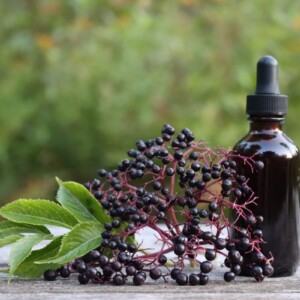
Elderberry Tincture
Equipment
Ingredients
- Fresh or dried elderberries roughly chopped
- Vodka or other high-proof alcohol or vegetable glycerin* if making an alcohol-free tincture
Instructions
- Begin by filling a clean mason jar about 1/3 to 1/2 full with either fresh or dried elderberries.
- Pour enough alcohol over the elderberries to fully submerge them, ensuring that the berries are completely covered.
- Tighten the lid securely on the jar and give it a gentle shake. Store the jar in a cool, dry place away from direct light and let the mixture steep for 6 to 8 weeks.
- Shake the jar lightly every few days if using alcohol. If making a glycerite tincture, shake it daily to help with the extraction. If you notice that the alcohol level is getting low, add more to ensure the elderberries remain covered.
- When the tincture has fully infused, set up a funnel lined with cheesecloth over a dark amber glass bottle. Carefully pour the elderberry mixture into the funnel, pressing gently on the herbs to extract all of the liquid into the bottle.
- Label the bottle with details like the contents, the date it was made, suggested dosages, and possible uses. Store the finished tincture in a cool, dark place, away from light, to maintain its potency.
Notes
Ways to Use Elderberry
Looking for more ways to use elderberry?
- Elderberry Syrup
- Elderberry Pie
- Elderberry Lolly Pops
- Elderberry Gummy Bears
- Elderberry Muffins
- Small Batch Elderberry Mead (One-quart recipe)
- Elderberry Oxymel
Homemade Herbal Tinctures
Why stop at elderberry? There are so many homemade herbal tinctures easily make right in your own kitchen!
- Echinacea Tincture
- Burdock Tincture
- Dandelion and Burdock Herbal Bitters
- Dandelion Tincture
- Chickweed Tincture
- Reishi Mushroom Tincture
- Black Walnut Tincture
Disclaimer on Homemade Herbal Remedies
I’ve been foraging wild medicines and treating my family with herbal remedies for the past 20 years, but I’m self-taught. Be aware that I am not a clinical herbalist, and this is based on my own research and personal experience using medicinal plants. I do not claim to have the experience that’d qualify me to advise you on your health, and I’m only providing this as a reference to encourage a broader interest in medicinal plants.
Please use this as a jumping-off point, but always do your own research and verify anything you read with multiple sources.
It’s always possible to have an adverse reaction to any medicinal herb, and plenty of people are allergic to even gentle herbs like chamomile. Always consult your doctor or a certified herbalist before trying any new medicinal plant. Often, they can have unintended reactions in combination with other herbs and supplements, and many herbs have side effects even when they are effective for their intended purpose.
If you are seriously interested in herbal medicine, I’d suggest investing in a course in herbal medicine, and I’d recommend any of the online courses put out by the Herbal Academy of New England. Specifically, the introduction to herbal medicine course and the family herbalist group of courses.
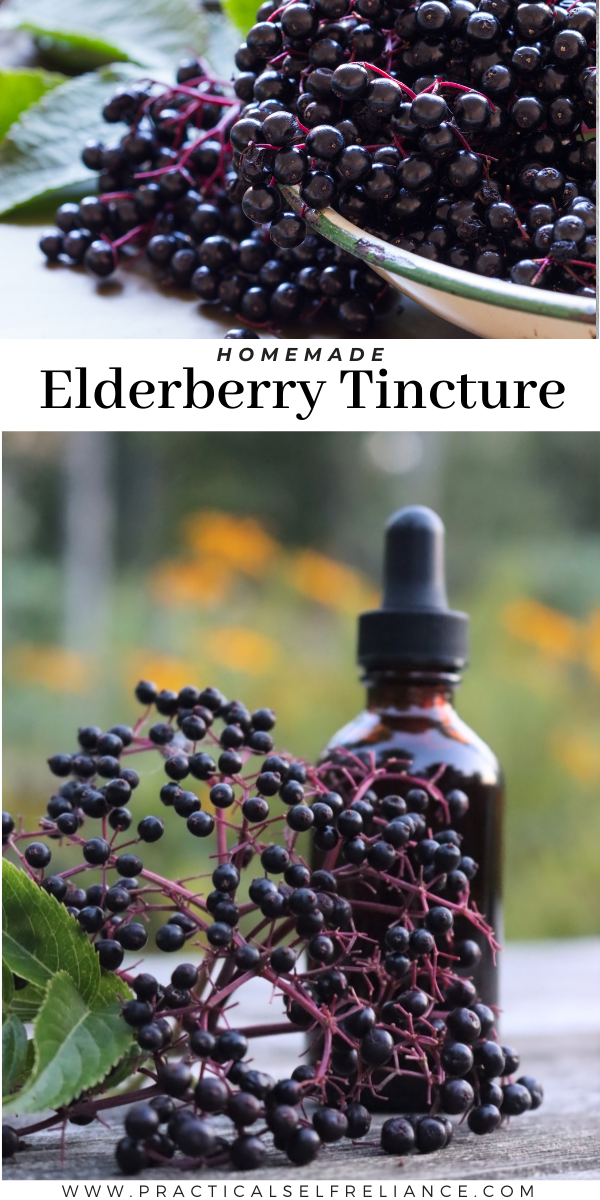


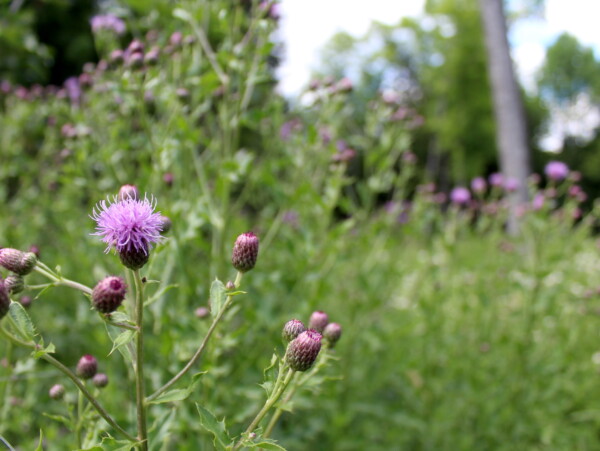
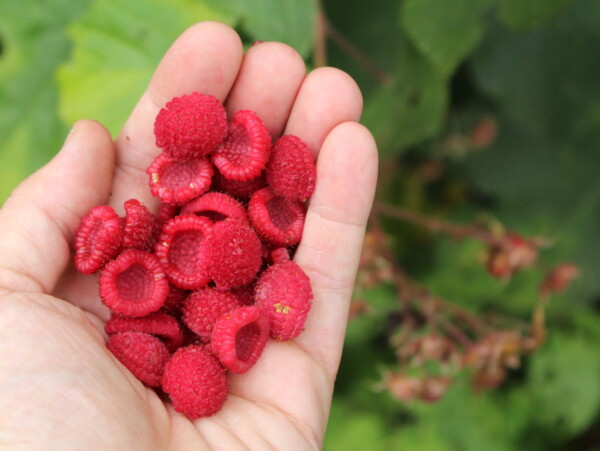










I haven’t tried this but wonder if the alcohol neutralizes the cyanide compounds found in raw elderberries? Every other recipe I’ve seen for them says they’re toxic raw and must be cooked before consuming.
It’s my belief that the alcohol neutralizes the compounds, as every guidance I’ve seen has you work with raw berries for tincture. I know when you’re making wine the fermentation process denatures those compounds, and I assume that the same is true for just the straight alcohol as well. I haven’t seen any specific guidance on this in a scientific study, but every herbalist I’ve consulted about it uses the berries raw for tincture. Best of luck!
Can frozen berries be used? A family member gave me a bag full of frozen ones to use to make jelly.
If you have frozen berries, I would recommend cooking the berries to remove the juice and then after straining you can add enough alcohol to preserve the mixture making it shelf stable.
I just read through the comments again, and a lot of people are really concerned about poisoning from the stems and seeds. In my mind, it is all about amount. Digitalis (foxglove) is poisonous, yet it is also a well-known heart medicine. If one were to gobble down the whole plant, yes, you probably would get very sick and possibly die, but the small amount that is used in heart medication can be life-saving. I strained the tincture and did not crush the seeds when muddling. I will only be having maybe a 1/4 tsp. a day and 99% of that is probably vodka, so the small amount is not something to get too worked up about in my mind.
Mine is finally finished and I’m so excited! I just taste tested it myself, and my question (just double checking) is that with the alcohol in it, it’s safe for kids? I read in your article that it was. Mine are 5 and older.
Thank you!
It’s a personal preference really. I feel totally comfortable giving it to my kids. It’s such a small amount of alcohol, probably less than cough syrup.
Any danger in using the fresh berries that haven’t been cooked to remove the harmful chemical if berries are not 100% ripe?
I would only use ripe berries.
I made some using your recipe for the first time this year being my plants produced enough to make a very small amount. I have been enjoying it over the last week or so, and I think that it really has prevented some sickness. The taste is wonderful. I don’t find the vodka overwhelming and the fruit flavor really shines through. Thank you so much for making all of your recipes clear and easy to follow!
You’re very welcome. We’re so glad you enjoyed the recipe.
My bushes are still very young, and so I only was able to harvest about a cup of berries. After washing and cleaning any debris, I put them directly into the small mason jar. I had gotten a “muddler” for mojitos, and I used this to break up the berries. It worked very easily and didn’t break up the seeds. I then added the vodka to help rinse off any fruit from the muddler before removing it. Also, I love the plastic lids that have gaskets built in for this stage. I don’t have to worry about rusting as I would with the two part metal rings. They are dishwasher safe and I will be able to reuse them hundreds of times. I think I have about twelve or fifteen of them that I’ve had for years. They come in different colors, which can be handy.
I was told after making your tincture to be sure to remove every tiny stem attached to the berry because they are toxic… I may have accidentally left a few here and there but didn’t think anything of it because it will be strained… do you think thats bad? Should I scrap this batch and start again??
It’s a completely personal decision since there are a lot of differing opinions out there. I would personally feel comfortable with it as long as they were strained out of the final formula.